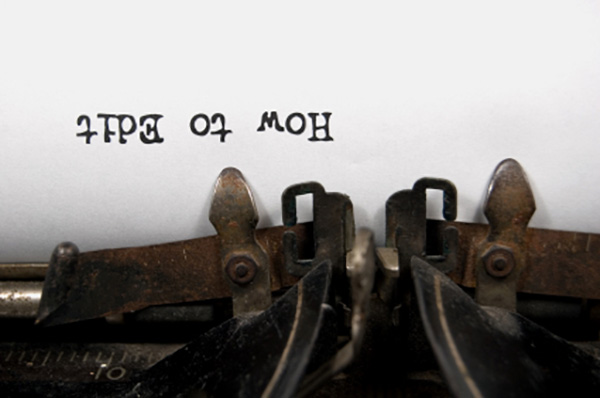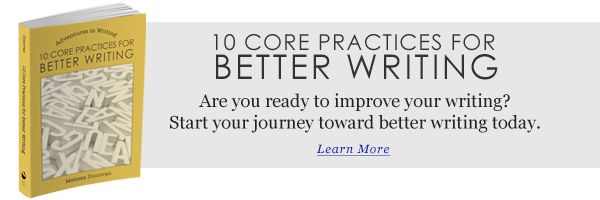
If you’re the token writer at your office, among your friends, or in your family, then you’re probably asked on a regular basis to edit, review, or proofread written documents.
Academic essays, business letters, and resumes will land on your desk with the word “HELP!” scrawled across the top.
Or maybe you’re ready to get serious about your writing, and you want to learn best practices for editing so you can clean up your work before sending it to beta readers, submitting to agents, or publishing.
The editing tips below will help you brush up on your editing skills, whether you’re polishing your own writing or cleaning up someone else’s.
Editing Tips
I spend a lot of time editing other people’s writing and self-editing my own work. In fact, I spend more time revising and proofreading than I do writing. So I thought I’d share a few of my favorite editing tips:
1. Accept Favor Requests for Editing
When a friend, family member, or coworker asks you to look at a draft, do it. Even if you’re busy, even if you don’t feel like it or have your own projects to write and edit, take it on. The more editing you do, the better you get at it, and that means you become better at editing your own work, too. Never pass up an opportunity for practice!
2. Read it First
Before you uncap your red pen, give the piece a quick read. If you edit on the first pass, you might have to go back and undo some of your markups or revisions. This can happen because you haven’t picked up the style and flow yet, because you don’t know where the piece is headed with regard to context, or because you’re focused on finding mistakes instead of understanding the material. If at all possible, read it first, and then go back and start editing.
3. Are You Wearing Your Editing Hat or Proofreading Hat?
When you edit, make sure editing is really what you’re doing. In other words, be aware that editing is not scouring the text for typos and stray punctuation marks. Editing is when we strengthen story, sentences, and paragraphs. Proofreading comes later. That’s not to say we don’t do a little proofing while editing or that we don’t do a little editing while proofing. I know I do. However, I always do a full revision focused on editing and another on proofreading. For more complex pieces, I do multiple edits and proofs.
4. Edit On-Screen and Track Changes
Many writers and editors swear by the printed page. But that’s a messy and inefficient way to edit. If you start editing on-screen, you’ll adjust to the new format and soon find it’s much easier than marking up print. If you’re making big revisions and you’re worried about losing the original text, use Microsoft Word’s feature, Track Changes, which does just what you’d expect — it tracks all the changes you make as you edit. Then you can go through and review every edit and accept or reject those changes individually or collectively. This is also a great way to edit twice — once to make the changes and again to approve them.
5. If You’re Not Sure, Look it Up (and Know What You Don’t Know)
Your greatest wisdom as an editor is knowing what you don’t know. Having resources in your arsenal is one thing. Using them is something else entirely. Don’t be lazy! Remember that every time you look something up, you learn something new and expand your writing skills. Plus, the more you look things up, the less you’ll need to look them up in the future. Eventually, they become a natural part of your writing process.
6. Keep a Grammar Manual and Style Guide Handy
When you’re proofreading and editing, you need to be meticulous. Don’t cut corners. If you’re not sure about grammar, spelling, punctuation, or context, you need to be able to open up a grammar manual or a style guide, so make sure you have the right resources handy. Be vigilant, be correct, and use good judgment, keeping in mind that sometimes it’s best to bend the rules, but only if you know what the rules are and why you’re breaking them.
7. Run Spell-Check and Grammar-Check First
Before you start editing, run spell-check and use your word processing software’s grammar checking tool (if it has one). Automated checkers don’t catch everything, but they can catch a lot of the most obvious mistakes, and that means you’ll have more time and brain energy for manual editing. Also, use the find-and-replace feature, which allows you to quickly find or replace a single error multiple times. For example, many people are still in the habit of using a double space after a period. I always do a find-and-replace to replace all those double spaces with the modern standard: single spaces after every period or terminal punctuation mark.
8. Read Slowly and Out Loud
The most crucial aspect of proofreading and editing is reviewing every single word and examining the written work at the word, sentence, and paragraph levels. You should be able to assess every document or manuscript in its entirety to check for readability, organization, and flow. This means you’ll have to go over each piece multiple times. To separate yourself from the content so you can better evaluate the writing, read slowly and read out loud. You’ll catch a lot of minor mistakes and typos this way.
9. Listen for Wording and Rhythm
Editing involves more than checking for grammar, spelling, and punctuation. When you read the piece aloud, pay attention to the rhythm. Does it flow smoothly? Do the sentences alternate in length or is there an excess of short (or long) sentences that have a droning rhythm? Break up some of those longer sentences and join some of the smaller sentences together to give the writing better rhythm and more musicality.
10. Pay Attention to Formatting
Formatting is actually separate from editing. This involves things like font (size, face, and other formatting options, such as bold or italics), paragraph and line spacing, and indentations. Chapter titles and subheadings, for example, should have the same font and spacing. Citations should be formatted with consistency (and preferably, adhering to a style guide).
BONUS TIP: Review to Perfection
I like to follow a five-step process for editing:
- Read the entire text.
- Second pass focuses on substance. Does the piece need deep changes, like repairs to plot holes?
- Third review focuses on word choice, sentence structure, and readability.
- Fourth pass is proofreading (checking for grammar, spelling, punctuation, and typos). This is where I read out loud, slowly.
- Final review and polish.
I repeat step five until I can’t find anything to improve. This is a rough guideline for editing. Some pieces need more; others need less. I might do one pass focused on dialogue. You’ll find that every piece of writing has its own needs. Be flexible so you can meet those needs and produce polished work.
Good Luck with Your Self-Editing!
If you have any editing tips of your own, please share by leaving a comment.
The post Editing Tips for Writers first appeared on Writing Forward.
Go to Source
Author: Melissa Donovan

